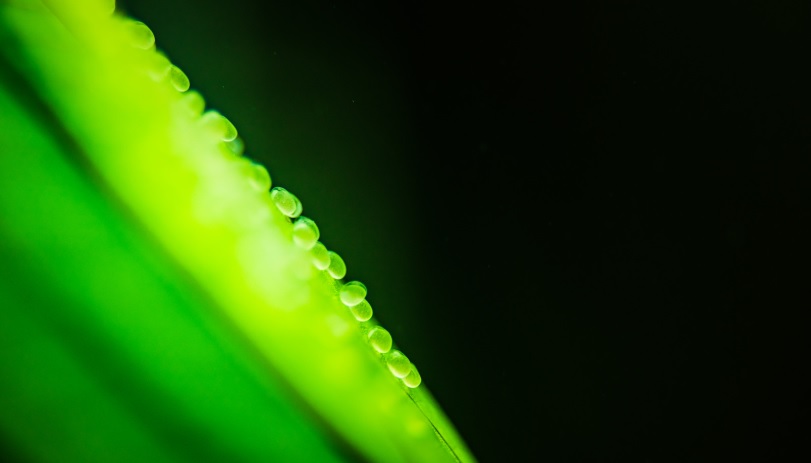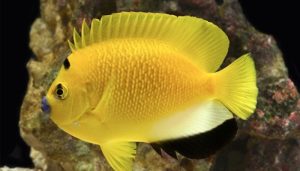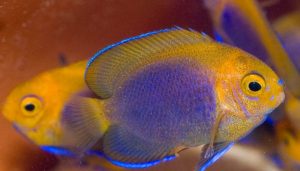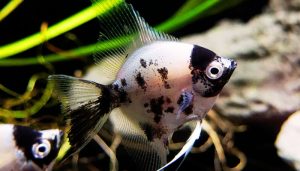Are you wondering How long does it take for angelfish eggs to hatch and what you need to do to ensure a healthy hatch rate? Understanding their breeding process is crucial for any fishkeeper looking to raise angelfish successfully. In this guide, we’ll break down everything you need to know about Angelfish eggs hatching time and the best care practices.
Angelfish eggs typically hatch within 48 to 72 hours, depending on water temperature and conditions. The ideal temperature range is 78-80°F (25-27°C) for optimal development. Proper aeration, water quality, and protection from fungus are essential to ensure healthy fry.
But hatching is just the beginning! You’ll need to know how to care for the delicate fry, prevent common issues, and create the perfect environment. Let’s dive in and explore expert-backed tips for raising healthy angelfish from eggs.
Table of Contents
ToggleHow Long Does It Take for Angelfish Eggs to Hatch?
Typically, angelfish eggs take around 48 to 72 hours to hatch, depending on various factors such as water temperature and overall water quality. Warmer water temperatures can speed up the hatching process, while cooler conditions may prolong it.
It’s essential for aquarists to monitor these factors closely to ensure the best conditions for the developing embryos. If the water temperature is maintained between 78°F and 84°F, the chances of a successful hatch are increased, and the angelfish fry will be ready to free swim within a few days.

Moreover, the time it takes to hatch can also be influenced by the health of the angelfish pair. A well-cared-for angelfish pair is more likely to produce fertilized eggs that will hatch successfully.
It is vital to observe the spawning behavior of the pair; if they are displaying signs of aggression or stress, it could compromise the health of the eggs. Therefore, maintaining a peaceful environment in the aquarium is essential for ensuring that the angelfish eggs hatch within the expected time frame.
Angelfish Eggs Hatching Time
The hatching time for angelfish eggs is a critical phase in the breeding process. Once the angelfish lay their eggs, the parents usually fan the eggs to provide oxygen and prevent fungal growth. This action is vital for ensuring that the embryos develop properly.
During this incubation period, hobbyists should avoid disturbing the breeding pair as stress could lead to the failure of the eggs to hatch. Observing the eggs closely will give insights into their development, and any white eggs that appear should be removed to prevent fungal outbreaks.
As the eggs mature, you’ll notice changes in their appearance. Healthy fertilized angelfish eggs will transition from translucent to a darker hue, indicating that the embryos are developing.
The angelfish pair will continue to care for the eggs by guarding them against potential threats in the aquarium. Understanding angelfish eggs hatch time allows hobbyists to prepare adequately for the arrival of the fry, ensuring they have the right environment and food ready for when the eggs hatch.
Angelfish Egg Development
Angelfish egg development is a fascinating process that starts right after fertilization. Once the eggs are laid, a fertilized egg will develop an embryo within it, utilizing the yolk for nourishment.
The development of the embryo can be observed through the eggs as they progress from clear to a more opaque state, indicating that the embryos are growing. During this time, it is crucial to maintain optimal water quality to prevent any harmful bacteria or fungus from affecting the eggs.
The development period typically lasts about three days, but environmental conditions can alter this timeline. For instance, if the water temperature is too low, the eggs may take longer to hatch, whereas higher temperatures can accelerate the process.
Hobbyists must also ensure that the aquarium is free of any contaminants and that the water is well-aerated to promote healthy egg development. As the angelfish fry prepare to hatch, they will begin to move within the eggs, signaling that the time for hatching is approaching.
Where Do Angelfish Lay Eggs in Aquarium?
Angelfish typically lay their eggs on flat surfaces within the aquarium, such as leaves, rocks, or spawning cones. This behavior is instinctual, as the angelfish pair seeks a safe and secure location for their eggs.
In a well-maintained freshwater aquarium, a breeding pair may prefer to use a sponge or a clean surface to ensure proper care for their offspring. The choice of location is vital, as it provides protection from potential threats and facilitates better water circulation around the eggs.
If the aquarium is set up in a community tank, it’s advisable to provide a designated breeding area to reduce the risk of other fish disturbing the spawning process. Installing a sponge filter can help maintain water clarity while also providing a safe space for the angelfish to lay eggs.
Additionally, ensuring that the breeding area is free from aggressive tankmates is essential for the safety of both the eggs and the breeding pair. This careful planning can significantly enhance the success rate of egg laying and subsequent hatching.
Why is it Important to Identify Fertilized Eggs?
Identifying fertilized angelfish eggs is crucial for ensuring a successful breeding outcome. Fertilized eggs are typically clear with a slightly yellowish tint, while unfertilized eggs will appear white and opaque.
Removing the infertile eggs promptly is essential to prevent fungal infections from spreading to the healthy eggs, as fungus can quickly decimate a clutch if left unattended. Monitoring the eggs closely allows hobbyists to take necessary actions to safeguard the developing embryos.
Moreover, recognizing viable eggs enables aquarists to prepare for the hatching process. Once the eggs are confirmed to be fertilized, hobbyists can adjust water conditions and ensure that the breeding pair is not disturbed.
This attention to detail can significantly impact the survival rate of the fry once they hatch. Understanding the importance of identifying fertilized eggs allows aquarists to become more effective breeders, ultimately leading to a thriving population of angelfish in their aquarium.
What are the Signs of Fertilized Angelfish Eggs?
There are several signs that indicate the presence of fertilized angelfish eggs. Firstly, fertilized eggs typically exhibit a clear or slightly yellowish coloration, whereas infertile eggs will turn white and become opaque.
This visual difference is a key indicator for hobbyists to monitor. Additionally, fertilized eggs will often develop a small dark spot within a couple of days, signifying that an embryo is forming inside. Observing these changes is vital for ensuring the health of the clutch.
Moreover, the behavior of the angelfish pair can also provide clues about the status of the eggs. If the parents are actively guarding and fanning the eggs, it is a strong indication that the eggs are fertilized and the pair is committed to their care.
Conversely, if the parents seem uninterested or are frequently leaving the eggs unattended, this may suggest that the eggs are not viable. Keeping an eye on these signs helps hobbyists make informed decisions regarding egg care and potential removal of infertile eggs.
Caring for Angelfish Eggs During Incubation
Caring for angelfish eggs during the incubation period is critical for ensuring a successful hatch. Maintaining optimal water quality is essential; the water should be clean and free from harmful chemicals.
Regular water changes and the use of a sponge filter can help maintain a stable environment. Additionally, monitoring the water temperature is crucial, as it plays a significant role in the development of the embryos within the eggs. Ideally, the temperature should be kept between 78°F and 84°F for optimal development.
During this time, it’s also important to minimize disturbance to the angelfish pair. The parents will typically fan the eggs, providing oxygen and preventing fungal growth.
If hobbyists notice any white or opaque eggs, these should be removed to safeguard the rest of the clutch. Providing a calm and stress-free environment is vital for the angelfish to thrive during the incubation period, as any disruption could lead to a failed hatch or unhealthy fry.
Raising Angelfish Fry After Hatching (expert tips)
Once the angelfish eggs hatch, the fry will initially rely on their yolk sac for sustenance until they are ready to free swim. It is crucial to provide a suitable environment for the fry to thrive, including maintaining optimal water quality and temperature.
After hatching, hobbyists should ensure that they have appropriate food ready, such as finely crushed flakes or brine shrimp, to support the growth of the fry. Feeding should be done multiple times a day to ensure healthy growth.
Moreover, it’s important to provide hiding spaces in the aquarium for the fry, as they can be vulnerable to larger fish or even their parents. Using moss or small decorations can create safe zones for the fry to explore.
Additionally, transfer the fry in a separate tank or a breeding box can help protect them from potential threats while they grow. By following these expert tips, hobbyists can successfully raise angelfish fry to adulthood, ensuring a thriving and vibrant population in their aquarium.
Conclusion about Hatching of Angelfish Eggs
How long angelfish eggs hatch? Understanding angelfish eggs hatching time and the care required throughout this process is essential for any aquarist interested in breeding. From recognizing viable eggs to successfully raising the fry, each step plays a vital role in ensuring a healthy population of angelfish. By maintaining optimal water conditions, identifying the signs of fertilization, and providing the right environment for the fry, hobbyists can enjoy the rewarding experience of breeding angelfish in their freshwater aquarium. With dedication and care, the journey from egg to fry can lead to a thriving community of these beautiful fish.
Recommended posts
- Angelfish Egg Stages & Hatching Process: (Exclusive Guide)
- The Complete Guide to Angel fish Tank Setup and Breeding Tips
- Breeding Angelfish – A Complete Guide for Beginners
- Angelfish Eggs Turning White? Common Reasons & Prevention
- Angelfish Fry Growth Stages: From Egg to Juvenile




